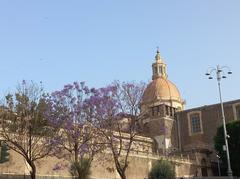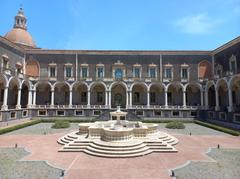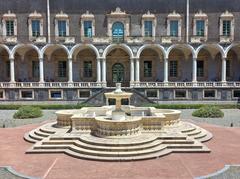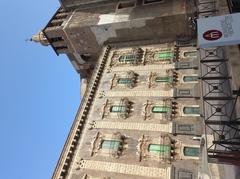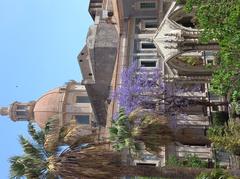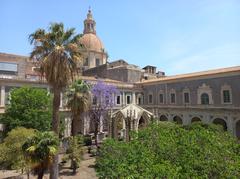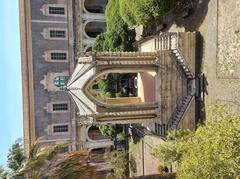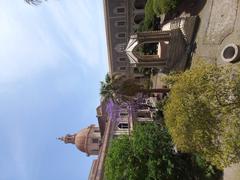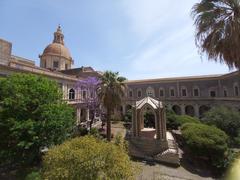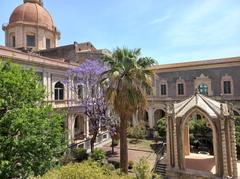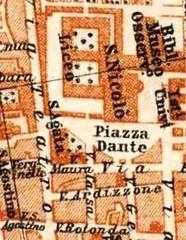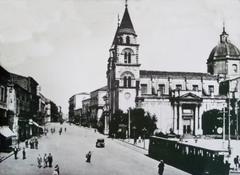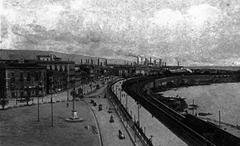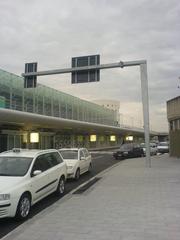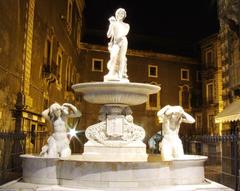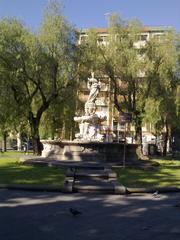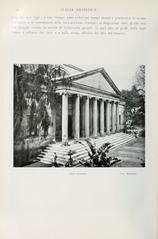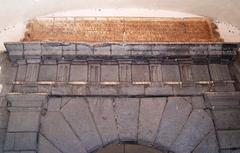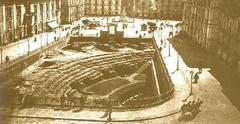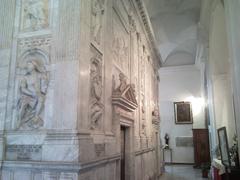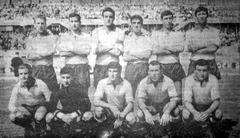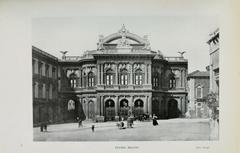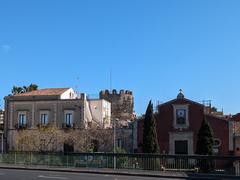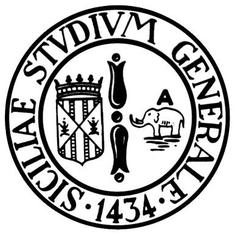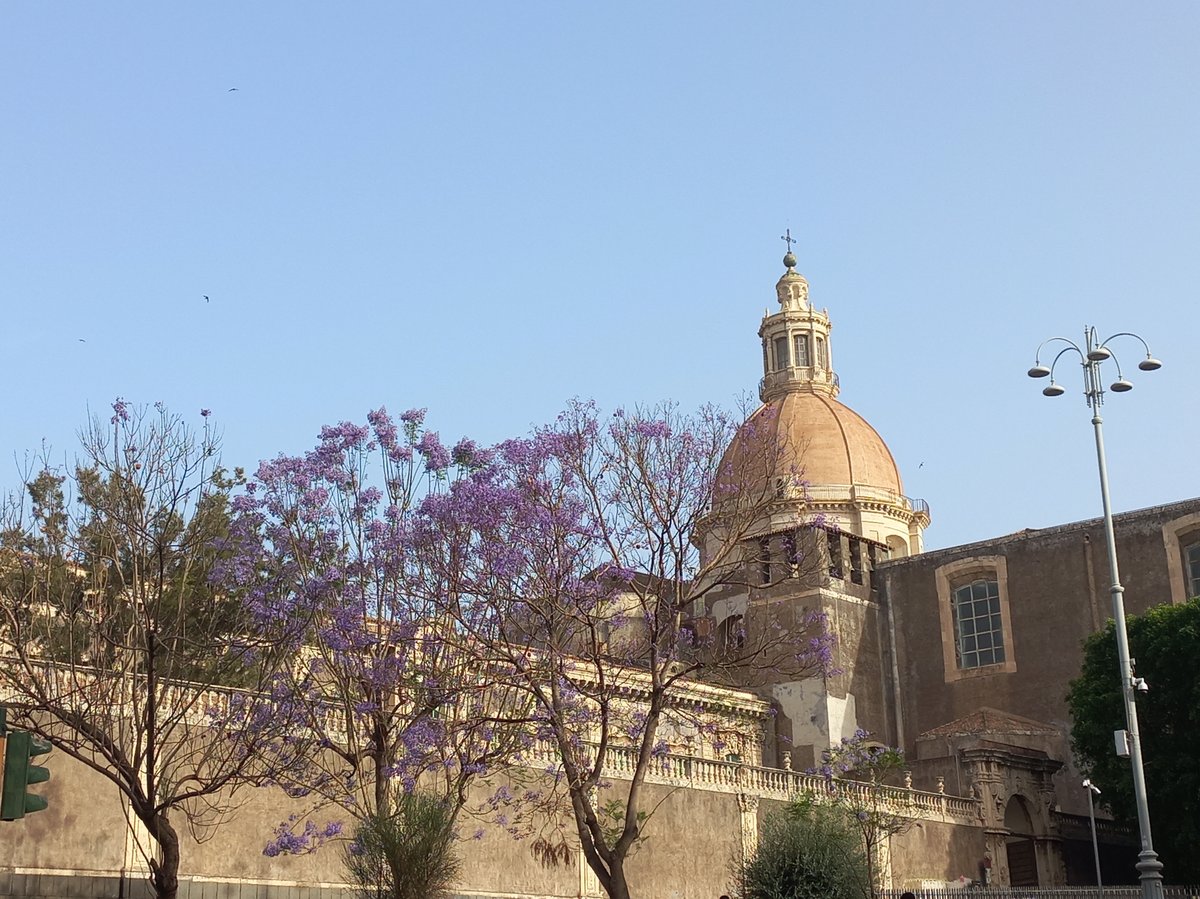
Monastery of San Nicolò l’Arena: Visiting Hours, Tickets, and Historical Significance in Catania
Date: 15/06/2025
Introduction
Nestled in the heart of Catania, Sicily, the Monastery of San Nicolò l’Arena stands as one of Europe’s most expansive and significant Benedictine monastic complexes. Known for its majestic Sicilian Baroque architecture and storied past, the monastery encapsulates the resilience, artistry, and cultural richness of the city. Founded in 1558 by Benedictine monks and named after San Nicola di Bari, its name “l’Arena” references the volcanic sand from nearby Mount Etna, a constant reminder of the power of nature.
Having weathered catastrophic events, including the 1669 Mount Etna eruption and the 1693 Val di Noto earthquake, the monastery was rebuilt in grand Baroque style by renowned architects such as Giovanni Battista Vaccarini and Stefano Ittar. Today, it is both a stunning architectural marvel and a dynamic cultural hub, home to the University of Catania’s Department of Humanities and host to numerous cultural events and exhibitions.
This guide presents everything you need to know for an enriching visit—including opening hours, ticketing, accessibility, and visitor tips—while exploring the monastery’s architectural, historical, and social significance. For the latest updates and practical information, consult the official website or use the Audiala app. (Monastery of San Nicolò l’Arena: Hours, Tickets, and Historic Highlights in Catania), (San Nicolò l’Arena in Catania: Hours, Tickets, and Architectural Highlights), (Cultural and Social Significance)
Table of Contents
- Historical Overview
- Architectural and Artistic Highlights
- Cultural and Social Significance
- Visitor Information
- Nearby Attractions
- Frequently Asked Questions (FAQ)
- Summary and Final Tips
- References
Historical Overview
Origins and Foundation
Founded in 1558 by Benedictine monks, the Monastery of San Nicolò l’Arena was established as a religious and cultural center, initially set apart from Catania’s city core and fortified with high walls and monumental gates. Its name pays homage to San Nicola di Bari and the volcanic “arena” (sand) prevalent in the area due to Mount Etna’s proximity.
Architectural Evolution
The monastery’s history is marked by cycles of destruction and renewal. The 1669 eruption of Mount Etna surrounded the monastery with a 12-meter-high lava bench, while the 1693 earthquake caused near-total destruction, sparing only the basement. Reconstruction, initiated in the early 18th century, transformed the complex into a Baroque masterpiece under the guidance of architects such as Giovanni Battista Vaccarini, Stefano Ittar, and Carmelo Battaglia Santangelo. The site continued to evolve through the centuries, adapting to changing religious, political, and civic needs, and was eventually repurposed for academic use by the University of Catania in the late 20th century.
Architectural and Artistic Highlights
Facade and Exterior Design
The main church’s facade, though unfinished, is a commanding example of Sicilian Baroque. Designed by Carmelo Battaglia Santangelo in 1796, it features colossal columns, three gabled portals, and an imposing staircase leading to a spacious gallery. The adjacent Baroque square, designed by Stefano Ittar, integrates the church with Catania’s urban fabric and provides a dramatic setting for the monastery complex. (historyof.eu)
Interior Layout and Artworks
The church’s interior is remarkable for its Latin cross plan, soaring dome, and three vast naves separated by massive pillars. While the decorative scheme is restrained, the side altars feature 18th-century paintings by notable artists:
- San Gregorio by Vincenzo Camuccini
- Martyrdom of SS. Placido and Flavia by Placido Campolo
- San Giuseppe and Martyrdom of Sant’Agata by Mariano Rossi
- San Benedetto and SS. Placido and Mauro by Antonio Cavallucci
Other highlights include the monumental Baroque organ and the sundial embedded in the transept floor, reflecting the monastery’s historical engagement with science and the arts. (historyof.eu)
Cloisters and Monastic Spaces
The complex encompasses two grand cloisters, serene gardens, and a rooftop terrace with panoramic views of Mount Etna and the city. The cloisters offer tranquil spaces for reflection, while the roof garden underscores the Benedictines’ self-sufficient lifestyle. Remnants of ancient Roman structures beneath the monastery reveal the site’s layered history. (lifebeyondthewire.com)
Cultural and Social Significance
The Monastery of San Nicolò l’Arena has long been a symbol of power and cultural refinement in Catania. Its architecture and scale reflect the Benedictines’ influential role in local governance and society, rivaling noble palaces. The monks were known not only for their religious devotion but also for their appreciation of art, science, and even the pleasures of daily life—an image immortalized in literature and local legend.
Following suppression and secularization in the 19th century, the monastery’s integration into the University of Catania preserved its educational mission. Today, it remains a vibrant center of scholarship, cultural events, and community activity, bridging Catania’s past and present. (Italy Magazine), (Wikipedia), (Monastero dei Benedettini)
Visitor Information
Opening Hours and Tickets
-
Opening Hours:
- Guided tours are available daily from 10:00 am to 5:00 pm (last tour at 4:00 pm).
- Check the official website for seasonal updates and closures.
-
Admission Fees:
- Standard Ticket: €10
- Reduced Ticket: €7.50 (ICOM members, groups, over 65, carers)
- University Students: €6
- Under 19: €3
- Children up to 7: Free (with adult)
- Disabled Visitors: Free
- Combined Ticket: €15 (includes Monastery, Diocesan Museum, Achillean thermal bath; valid for 1 month)
(Monastero dei Benedettini)
Getting There
- Address: Piazza Dante, 32, 95124 Catania, Italy
- Public Transport:
- Alibus from the airport to Piazza Stesicoro, then a short walk
- Bus lines 431R, 504M, 632, and 642 serve the area
- Subway to Piazza Stesicoro, followed by a walk
- Taxi:
- Radio Taxi Catania (+39 095 8833)
- New Taxi Catania (+39 348 9210175)
Accessibility
The monastery is partially accessible; some areas are challenging due to stairs or uneven floors. Carers of disabled persons receive reduced admission. Assistance is available upon request.
Guided Tours and Facilities
-
Tours:
- Offered in Italian and English; last about 60–90 minutes
- Advance booking is highly recommended, especially in peak season
- Self-guided access is limited; guided tours provide the most comprehensive experience
(WhichMuseum)
-
Facilities:
- Restrooms available
- Gift shop with books and local crafts
- Photography generally permitted (check for restrictions)
Practical Visitor Tips
- Book tours online in advance to secure your spot, especially during busy times (Monastero dei Benedettini).
- Arrive early for check-in and to enjoy the exterior.
- Wear comfortable shoes and bring sun protection or a jacket, depending on the season.
- Children are welcome (free up to age 7 with adult supervision).
- Contact the site in advance for detailed accessibility information if needed.
- Don’t miss the rooftop terrace for panoramic photos of Catania and Mount Etna.
Nearby Attractions
Within a short walk, discover:
- San Nicolò l’Arena Church (largest in Sicily, with unfinished facade)
- Terme della Rotonda (Roman baths)
- Museo Civico Belliniano
- Sant’Agata al Carcere (historic church)
- Via Etnea (main shopping and strolling street) (The Crazy Tourist), (Trek Zone)
Frequently Asked Questions (FAQ)
Q: What are the visiting hours for San Nicolò l’Arena?
A: Daily from 10:00 am to 5:00 pm, last tour at 4:00 pm. Check official sources for updates.
Q: How much are tickets?
A: Standard tickets are €10, with several discounts available. See above for full pricing.
Q: Are guided tours available?
A: Yes, in Italian and English; booking in advance is advised.
Q: Is the monastery accessible?
A: Partially; contact the site for details.
Q: Can I visit without a guide?
A: Self-guided access is limited; guided tours are recommended.
Summary and Final Tips
The Monastery of San Nicolò l’Arena is a cornerstone of Sicilian Baroque heritage, offering visitors a journey through centuries of art, history, and culture. Its adaptive reuse as a university keeps it alive as a vibrant civic space. For an optimal visit, book tickets in advance, prioritize a guided tour, and explore the surrounding historic center of Catania. Stay informed about upcoming events and plan your trip with the official website and the Audiala app.
References
- (Monastery of San Nicolò l’Arena: Hours, Tickets, and Historic Highlights in Catania)
- (San Nicolò l’Arena in Catania: Hours, Tickets, and Architectural Highlights)
- (Cultural and Social Significance)
- (Monastery of San Nicolò l’Arena Visiting Hours, Tickets & Tips | Catania Historical Sites)
*Image suggestions:
- Monastery façade at Piazza Dante (“Monastery of San Nicolò l’Arena facade at Piazza Dante, Catania historical site”)
- Marble Cloister interior
- Rooftop terrace with Mount Etna view
- Map of central Catania showing the monastery and key nearby attractions*
For more on Catania’s Baroque architecture, Mount Etna excursions, and Sicilian heritage, explore our related articles and download the Audiala app for audio tours and exclusive content.
